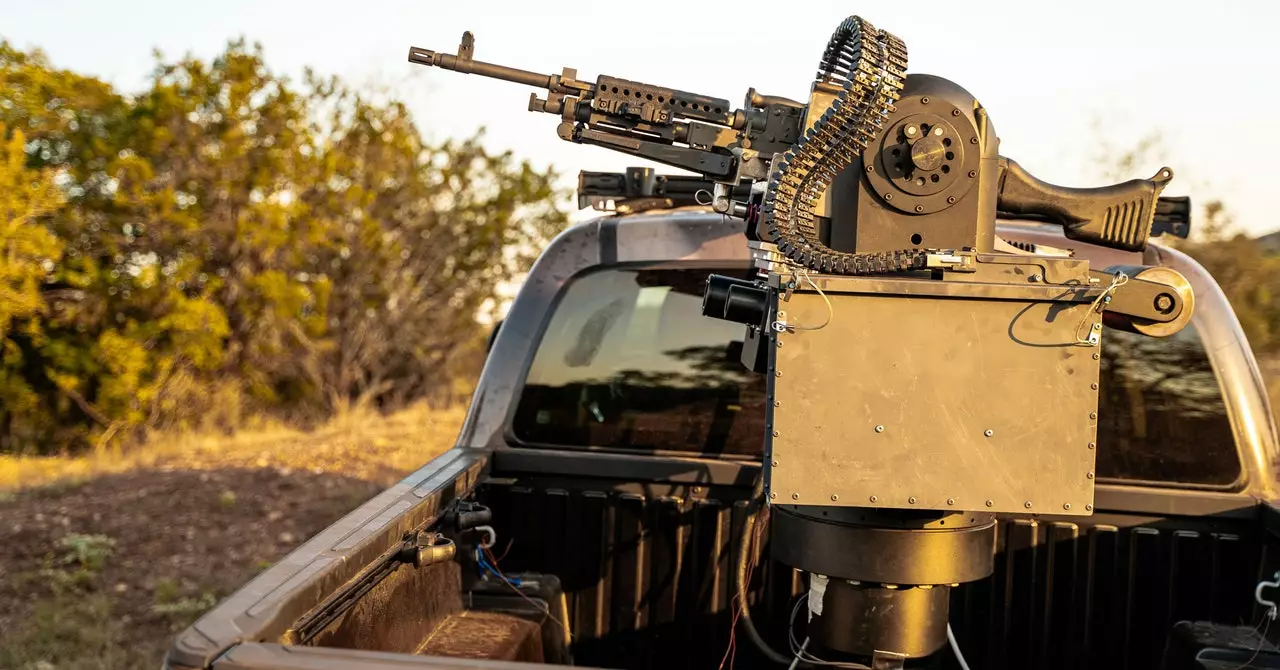In recent years, the evolution of warfare has brought about significant changes, particularly with the proliferation of low-cost weaponized drones that pose a formidable challenge to military forces. As these unmanned aerial vehicles (UAVs) become more prevalent on the battlefield, the U.S. military has found itself in a precarious situation, striving to ensure the safety of its personnel while adapting to this evolving threat. What has emerged is a compelling narrative of innovation, adaptation, and a return to the fundamentals of firearms technology.
The rise of adversary drones has transformed the landscape of modern combat, creating an urgent need for effective countermeasures that can counteract their advantages in speed, stealth, and affordability. The U.S. military’s response to this issue is multifaceted, involving costly munitions, experimental directed energy systems, and an expansive fleet of military drones. However, amid these complex solutions, the Pentagon has begun to reconsider a more traditional yet sophisticated approach: reinventing existing firearms. This focus on simplicity and efficiency is a refreshing pivot in a time where high-tech solutions often overshadow foundational concepts.
At the forefront of this movement is the Bullfrog, an innovative robotic gun system that showcases the potential of combining advanced technology with practical weaponry. Developed by Allen Control Systems, the Bullfrog employs an AI-driven approach to engage drone targets, where a 7.62-mm M240 machine gun is mounted on a rotating turret equipped with state-of-the-art sensors and computer vision capabilities. This hybrid system has captivated military officials and experts alike, as its ability to accurately identify and engage fast-moving drones presents a novel solution in a field increasingly dominated by technology.
A significant challenge in targeting UAVs lies in the dexterity and precision required to effectively hit rapidly moving objects. Conventional firearm skills, while essential, often fall short in this new era of warfare. In recognition of this limitation, the U.S. military has initiated various strategies to enhance the effectiveness of small arms against airborne threats. These range from developing specialized ammunition designed to replicate shotgun effects to integrating advanced optical systems that assist in target acquisition.
However, Steve Simoni, cofounder and CEO of ACS, underscores a fundamental shift in thinking. He posits that the integration of advanced robotics and sophisticated AI can significantly reduce the margin for error in target acquisition, allowing for improved accuracy and faster response times against UAVs. By automating the aiming process and employing AI for tracking, systems like the Bullfrog stand to redefine how the military approaches aerial threats, transforming a fundamental element of firearm use and enhancing operational efficiency.
The testing of the Bullfrog during the Department of Defense’s Technology Readiness Experimentation (T-REX) event has raised important discussions about the implications of introducing autonomous lethality into the military’s arsenal. Regulatory bodies and researchers are increasingly concerned about the ethical ramifications and operational rules governing autonomous systems in warfare. The Pentagon’s potential adoption of the Bullfrog, should it proceed, would mark a significant milestone as the first known lethal autonomous weapon in active service. This development necessitates a thorough examination of the ethical frameworks surrounding the use of AI in military operations.
As discussions surrounding the moral implications of autonomous warfare continue to evolve, it is essential for military leaders and policymakers to draft comprehensive policies governing the deployment of such technologies. Striking a balance between leveraging advancements in technology while ensuring accountability and adherence to wartime ethics is vital.
The emergence of autonomous systems like the Bullfrog signals a noteworthy transition in military strategy, one that embraces technological advancements while reinforcing the necessity of foundational weaponry. The interplay between artificial intelligence and traditional firearms offers a roadmap for future developments in the field, emphasizing that innovation does not always require a complete overhaul of existing systems.
As drone technology continues to progress, so too must the responses of military forces globally. The U.S. Army’s integration of counter-drone measures and autonomous capabilities into training programs reflects a proactive stance towards emerging threats. The lessons learned from systems like the Bullfrog and the ideals surrounding necessary innovation can not only reshape military arsenals but also redefine the rules of engagement in modern warfare. The road ahead is both promising and complex, and as the military continues to adapt, the deployment of autonomous firearms stands as a testament to the ongoing evolution of combat strategies globally.


Leave a Reply
You must be logged in to post a comment.